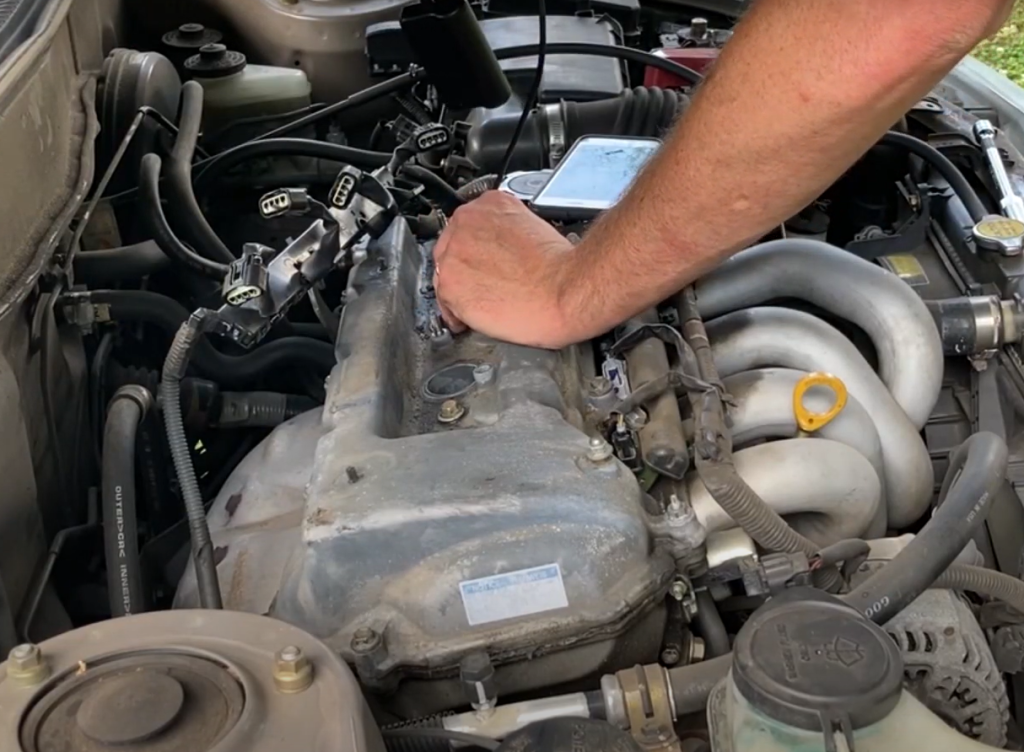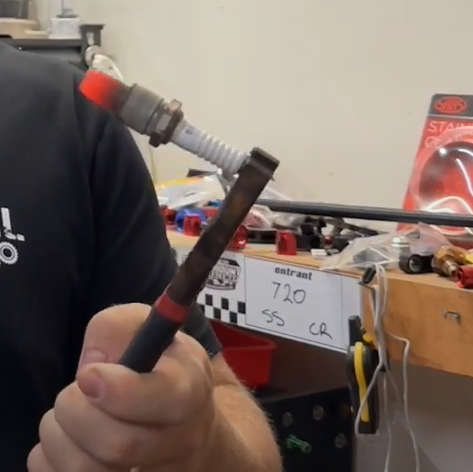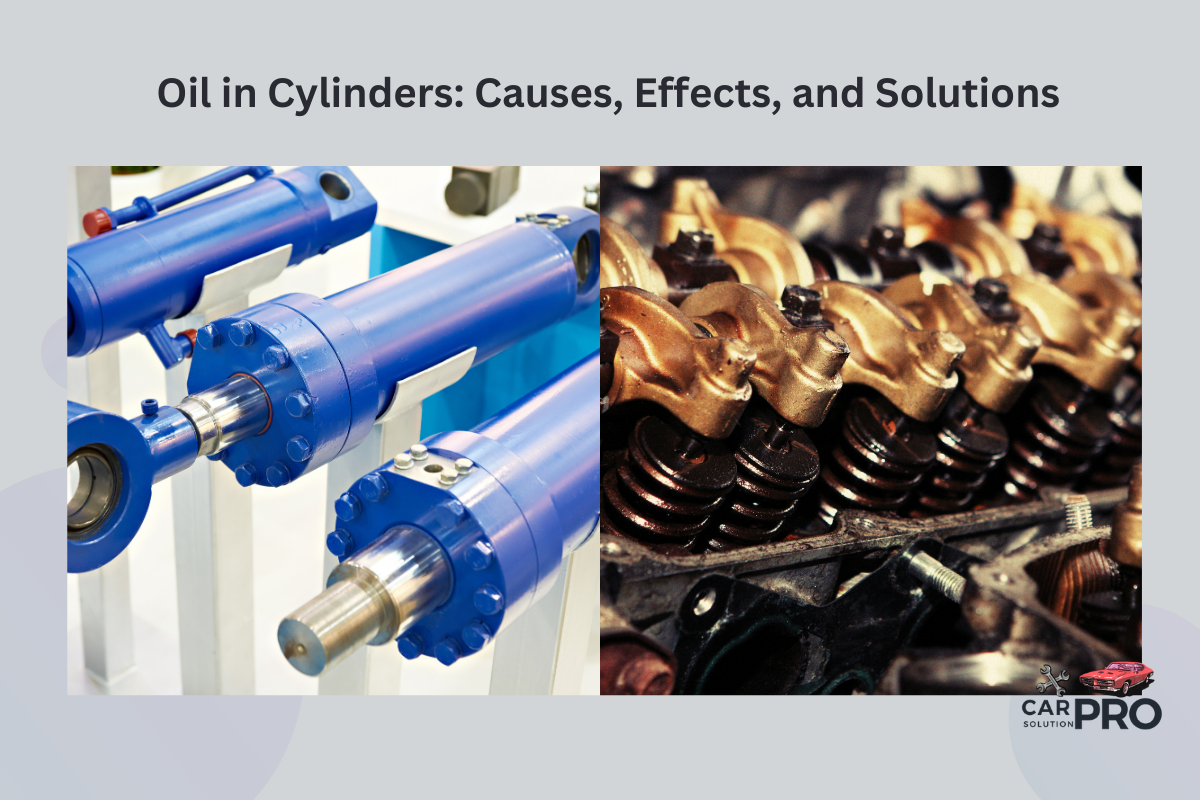Oil in cylinders is a common issue that can affect car engines. It happens when engine oil leaks into the combustion chamber where it shouldn’t be. This problem can lead to various engine troubles and reduced performance.
When oil gets into the cylinders, it can cause blue smoke from the exhaust, poor fuel economy, and engine damage if left unchecked. The main culprits behind this issue are worn piston rings, damaged valve seals, or a faulty head gasket. These parts normally keep oil out of the combustion area.
Regular car maintenance and prompt attention to warning signs can help prevent oil from entering the cylinders. If you notice any strange smells, unusual smoke, or decreased engine power, it’s important to have your car checked by a mechanic. They can run tests to find out if oil is leaking into the cylinders and fix the underlying problem.
Key Takeaways
- Oil in cylinders can cause engine problems and reduced performance
- Worn parts like piston rings or valve seals often cause oil leaks into cylinders
- Regular maintenance and quick action on warning signs can prevent major engine damage
Basics of Internal Combustion Engines
Internal combustion engines convert fuel into motion through controlled explosions. These engines power most cars and trucks on the road today. Oil plays a key role in keeping engine parts moving smoothly.
Engine Operation Cycle
The four-stroke cycle is the most common in car engines. It has four main steps:
- Intake: The piston moves down, pulling in fuel and air.
- Compression: The piston moves up, squeezing the mixture.
- Combustion: A spark ignites the fuel, pushing the piston down.
- Exhaust: The piston moves up, pushing out waste gases.
This cycle repeats many times per second. The moving piston turns a crankshaft, which powers the car’s wheels.
Some key engine parts include:
- Cylinder: Where fuel burns
- Piston: Moves up and down in the cylinder
- Valves: Let fuel in and exhaust out
- Spark plug: Starts the fuel burning
Role of Oil in Engines
Oil is vital for engine health and performance. It has several important jobs:
- Lubrication: Oil coats moving parts, reducing friction and wear.
- Cooling: It helps remove heat from hot engine parts.
- Cleaning: Oil picks up dirt and debris, keeping the engine clean.
- Sealing: It helps form a seal between the piston and cylinder wall.
Engine oil flows through small passages in the engine. An oil pump keeps it moving. Regular oil changes are crucial. Old oil can’t do its job well, leading to engine damage.
Causes of Oil in Cylinders

Oil in cylinders can lead to serious engine problems. Several factors can cause this issue, ranging from worn components to mechanical failures.
Worn Piston Rings
Piston rings play a crucial role in sealing the combustion chamber. They prevent oil from entering the cylinders and keep combustion gases from escaping.
Over time, these rings can wear out due to friction and high temperatures. Worn rings lose their ability to create a proper seal.
This allows oil to slip past and enter the combustion chamber. As a result, the engine may burn oil and produce blue smoke from the exhaust.
Regular maintenance and timely replacements can help prevent this issue.
Faulty Valve Seals
Valve seals are small components that control oil flow around the valve stems. They ensure proper lubrication while limiting excess oil from entering the combustion chamber.
When valve seals deteriorate, they fail to regulate oil flow effectively. This can lead to oil seeping into the cylinders, especially when the engine is off for extended periods.
Symptoms of faulty valve seals include:
- Blue smoke on startup
- Increased oil consumption
- Rough idling
Replacing worn valve seals can often resolve this problem and restore proper engine function.
Head Gasket Failure
The head gasket seals the space between the engine block and cylinder head. It keeps oil, coolant, and combustion gases separate.
A blown head gasket can create passages for oil to enter the cylinders. This often results in:
- White smoke from the exhaust
- Oil in the coolant
- Coolant in the oil
Head gasket failure is a serious issue that requires prompt attention. Ignoring it can lead to severe engine damage and costly repairs.
Excessive Engine Oil Levels
Overfilling the engine oil can cause problems. Too much oil in the crankcase can create excess pressure.
This pressure may force oil past seals and gaskets into places it shouldn’t be, including the cylinders.
Signs of overfilled oil include:
- Blue smoke from the exhaust
- Oil leaks
- Foamy oil on the dipstick
Always follow manufacturer guidelines for oil capacity. Use the dipstick to check oil levels regularly and avoid overfilling.
Diagnosing Oil in Cylinders
Spotting oil in cylinders early can prevent major engine damage. There are several key methods to check for this issue, each providing valuable insights into the engine’s condition.
Visual Inspection
A visual check is the first step in diagnosing oil in cylinders. Remove the spark plugs and look for oily residue. If you see oil on the plug tips or inside the spark plug wells, it’s a sign of oil entering the combustion chamber.
Use a flashlight to peer into the cylinders through the spark plug holes. Look for oil pooling or coating the cylinder walls. This can indicate worn piston rings or valve seals.
Check the exhaust for blue smoke, which often means oil is burning in the combustion chamber. This is especially noticeable when the engine is cold or under heavy load.
Compression Test
A compression test measures the pressure in each cylinder during the engine’s compression stroke. This test can reveal issues with piston rings, valves, or cylinder walls.
To perform a compression test:
- Warm up the engine
- Remove all spark plugs
- Disable the fuel and ignition systems
- Insert a compression gauge into each spark plug hole
- Crank the engine and record readings for each cylinder
Low compression in one or more cylinders can point to oil leakage. If adding oil to a cylinder temporarily increases compression, it likely means worn piston rings are allowing oil to enter.
Leak-Down Test
A leak-down test is more precise than a compression test. It involves pressurizing each cylinder with compressed air and measuring how much air escapes.
To conduct a leak-down test:
- Set the piston to top dead center on the compression stroke
- Connect a leak-down tester to the spark plug hole
- Apply compressed air and measure the percentage of air loss
Listen for air escaping. Hissing from the oil filler cap or dipstick tube suggests worn piston rings. Air coming from the exhaust or intake may indicate valve issues.
A high leak-down percentage, especially with air escaping into the crankcase, often means oil is entering the cylinders through worn rings or cylinder walls.
Consequences of Oil Presence
Oil in cylinders can cause serious problems for an engine. It affects performance, damages components, and increases emissions. These issues can lead to costly repairs if not addressed quickly.
Reduced Engine Performance
When oil enters the combustion chamber, it interferes with the normal burning of fuel. This leads to incomplete combustion and lower power output. Engines may misfire or run roughly when oil is present.
Acceleration can become sluggish as the engine struggles to produce power. Fuel efficiency often drops as well. The engine has to work harder to overcome the oil contamination.
In severe cases, too much oil can cause hydrolock. This happens when liquid prevents the pistons from moving properly. It can result in bent connecting rods or other major engine damage.
Spark Plug Fouling

Oil on spark plugs prevents them from creating the spark needed for ignition. Fouled spark plugs can cause misfires, rough idling, and hard starting.
The electrodes become coated with oil, reducing the gap where the spark forms. This weakens the spark or prevents it entirely. Continued fouling leads to carbon buildup on the plugs.
Replacing spark plugs frequently becomes necessary when oil is present. However, new plugs will quickly foul again if the underlying issue isn’t fixed. Ignoring fouled plugs can lead to catalytic converter damage over time.
Excessive Exhaust Emissions
Oil burning in the combustion chamber creates blue-tinted exhaust smoke. This visible smoke indicates increased pollutants being released into the air.
Unburned hydrocarbons and particulate matter rise dramatically. These emissions are harmful to the environment and human health. They also cause a vehicle to fail emissions tests.
The catalytic converter can become overwhelmed by oil contamination. This reduces its ability to clean exhaust gases. Eventually, the converter may clog or melt internally from excessive heat.
Solutions and Preventive Measures
Addressing oil in cylinders requires a mix of regular maintenance, specialized products, and professional repairs. These approaches help prevent issues and fix existing problems.
Regular Maintenance
Regular oil changes are crucial to prevent oil from entering cylinders. Change your oil every 3,000-5,000 miles or as recommended by your vehicle’s manufacturer.
Check and replace the air filter regularly. A clogged filter can cause oil to be sucked into the combustion chamber.
Inspect valve cover gaskets and seals for wear. Replace them if you notice any cracks or damage.
Keep an eye on oil levels. Low oil can lead to increased consumption and potential cylinder issues.
Clean the PCV (Positive Crankcase Ventilation) valve. A clogged PCV valve can cause pressure buildup, forcing oil into cylinders.
Oil Additives
Use high-quality motor oil suitable for your engine. Synthetic oils often provide better protection and stability.
Consider engine oil additives that help reduce oil consumption. These products can improve seal condition and reduce leaks.
Some additives contain detergents that clean engine internals. This can help remove sludge and deposits that contribute to oil leaks.
Choose additives designed to maintain proper oil viscosity. This helps ensure oil stays where it should and doesn’t enter cylinders.
Be cautious with additives. Use only reputable products and follow manufacturer recommendations to avoid engine damage.
Professional Engine Repair
For severe cases, seek professional repair. Mechanics can perform compression and leak-down tests to pinpoint issues.
Worn piston rings often cause oil in cylinders. A mechanic can replace these, though it’s a major repair.
Valve seal replacement may be necessary if oil is entering through the valve guides.
Head gasket issues can allow oil into cylinders. Professional replacement is crucial for proper sealing.
In some cases, cylinder honing or engine rebuilding might be required. This is typically needed for older or high-mileage engines.
Frequently Asked Questions
Oil in engine cylinders can cause serious problems. Engine owners often have questions about symptoms, causes, fixes, and impacts of this issue.
What are the indicators of oil presence in engine cylinders?
Blue smoke from the exhaust is a key sign of oil in cylinders. Other indicators include fouled spark plugs, decreased engine performance, and increased oil consumption.
Engine misfires and rough idling may also occur. A burning oil smell while driving can point to this problem.
What are the common causes behind oil accumulation in the cylinders?
Worn piston rings often allow oil to seep into cylinders. Damaged valve seals can also let oil enter the combustion chamber.
Overfilling the engine oil or using the wrong viscosity can contribute. Clogged PCV systems may cause excessive crankcase pressure, pushing oil into cylinders.
What are the steps for rectifying the issue of oil in engine cylinders?
Diagnosing the root cause is crucial. A mechanic may need to perform a compression test or leak-down test.
Replacing worn piston rings or valve seals can fix the issue. Proper oil levels and viscosity should be maintained.
How does oil in the cylinders affect engine misfires?
Oil-fouled spark plugs can’t create proper sparks, leading to misfires. This causes rough running and reduced power.
Excess oil in cylinders can also interfere with combustion, resulting in misfires and poor engine performance.
What impact does oil in the cylinders have on a diesel engine?
In diesel engines, oil in cylinders can cause excessive smoke and reduced fuel efficiency. It may lead to premature wear of injectors and turbochargers.
Oil contamination can also affect the combustion process, potentially causing engine damage over time.
How can oil in the spark plug wells be addressed?
Remove the spark plugs and clean the wells thoroughly. Use a shop vacuum to remove excess oil.
Replace the spark plug tube seals if they’re damaged. Ensure proper torque when reinstalling spark plugs to prevent future leaks.


